1. Segovia Aqueduct
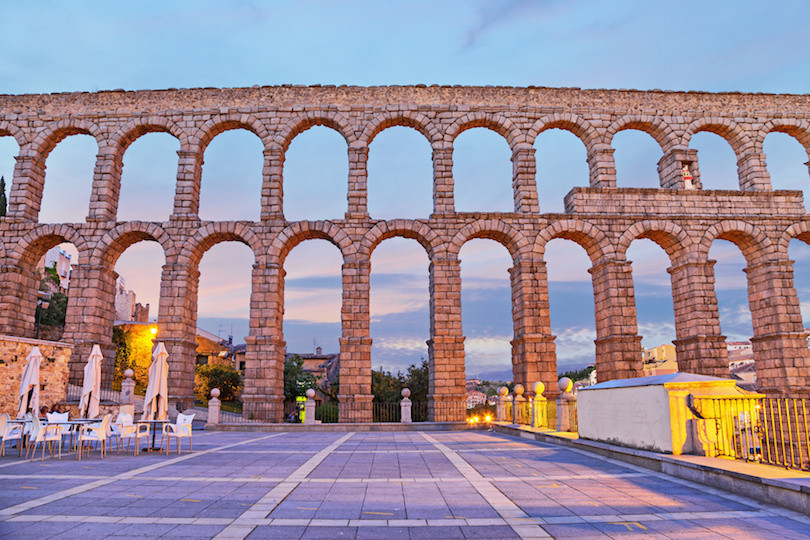
Located in the historic center of Segovia in Spain, this amazing aqueduct is one of the most beautiful structures and is still preserved today. Believed to have been built by the Romans around 110 AD, it was used to transport water from the nearby mountains to the city for the people.
The two-story aqueduct has some beautiful brick work and at its highest point reaches 28.5 m. In total, the aqueduct has 88 elegant arches, all of which are timeless.
2. Hercules Tower

Famous as the oldest operating lighthouse in the world, Hercules Tower was built overlooking Spain’s wild and rugged North Atlantic coast in the second century AD.
This 55m high tower with a sturdy appearance was last restored in 1791. Today, the tower is a scenic spot on the peninsula in Galicia that attracts many tourists.
3. Pula Arena

The arena is a structure that still retains the complete circuit of sparkling white limestone walls. In its heyday, it could hold up to 23,000 cheering spectators. Additionally, there are some wonderful underground galleries for visitors to explore. Illuminated at night, the arena regularly hosts musical events with rock bands and opera singers instead of gladiators.
4. Celsus Library
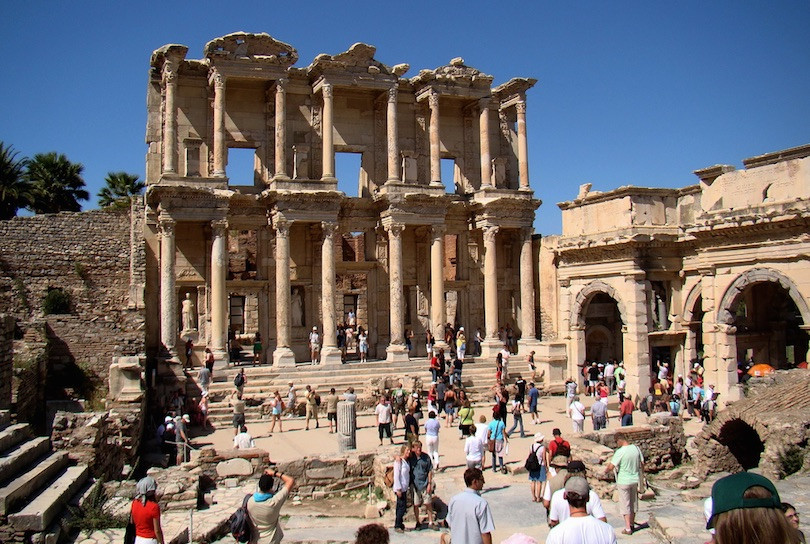
Located in the city of Ephesus in Türkiye, the Celsus library deserves to be appreciated for its exquisite architecture. One of the only remaining libraries from the Roman Empire, it was built around 120 AD as a funerary monument for Gaius Julius Aquila’s father.
While much of the building was destroyed long ago in a fire, the wonderful facade with its intricate details and stunning statues was rebuilt in the 1970s. It has now returned into a popular tourist destination and looks especially eye-catching when lit up under the night sky.
5. Diocletian’s Palace
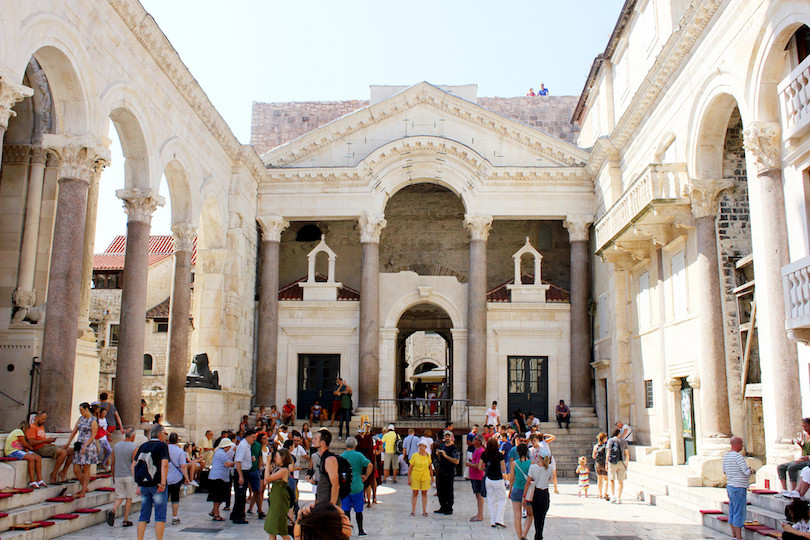
Built to be a splendid and luxurious retirement home for the Roman emperor Diocletian, this preserved palace and its adjoining fortress now make up nearly half of Split’s old town. This is a massive complex that is fascinating to walk around; along the elaborate facade, it’s all built of limestone and sparkling white marble.
Situated along the city’s riverbanks are the emperor’s apartments, which have a number of wonderful halls and temples for visitors to explore, as well as a massive central court. Built over decades, Diocletian’s palace is now one of the most visited monuments in Croatia.
6. El Djem Arena
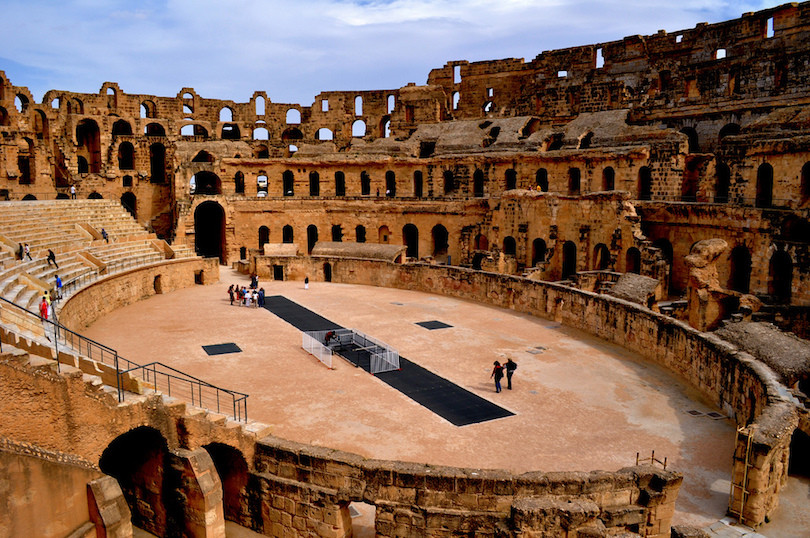
El Djem Arena is currently located in the Tunisian city of the same name. Built around 238 AD, the massive arena once welcomed crowds of up to 35,000 people at a time to watch gladiator matches and other public spectacles. Its huge stone blocks and grand domes still exist today.
7. Pont du Gard
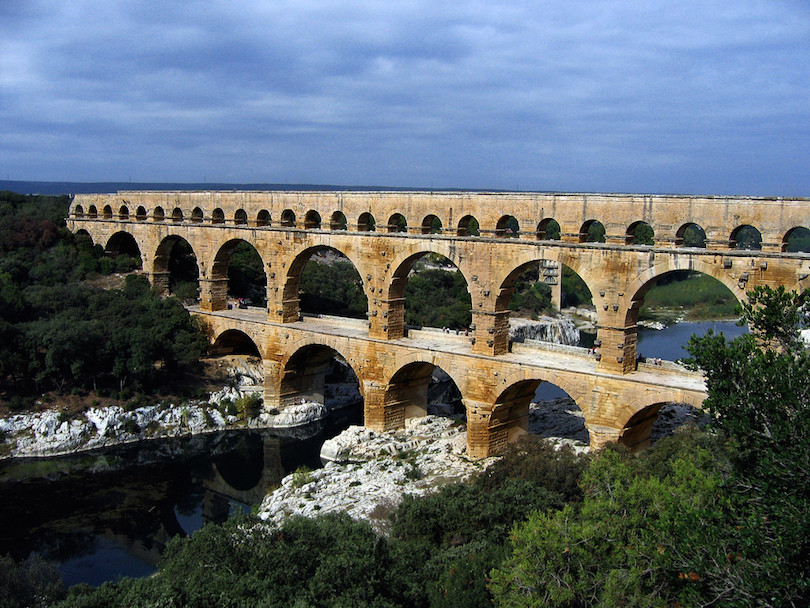
The Pont du Gard is the most impressive part of a 50 km long aqueduct built to carry water to Nimes in modern-day France. Stretching the width of the River Gardon, it is the tallest of the Roman aqueducts, with three tiers of arches reaching 48.8 meters high.
Although it was built in the first century AD, it is still very well preserved. Situated in a stunning location, Pont du Gard makes for some great photos and is now a popular tourist attraction and important historical site.
8. Pantheon

Since its completion in 125 AD, the Pantheon has become a prominent feature of central Rome. Means ‘temple of all gods’ in Latin. Its large Corinthian columns and cave dome are well preserved, due to its continuous use throughout the centuries and millennia.
Having played a hugely influential role in Western architecture, the Pantheon’s stunning columns and arches have been recreated countless times by architects around the world.
9. Baalbek
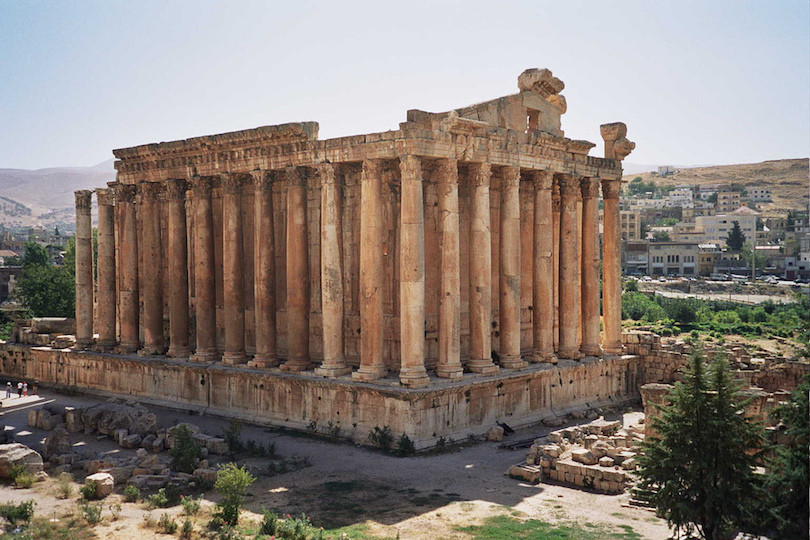
Once known as Heliopolis – the City of the Sun – the vast complex of Baalbek is home to some of the most impressive Roman ruins around. Of these, the two largest and most majestic temples were the temple of Bacchus and the temple of Jupiter; both date to around the first and second centuries BC.
10. Colosseum
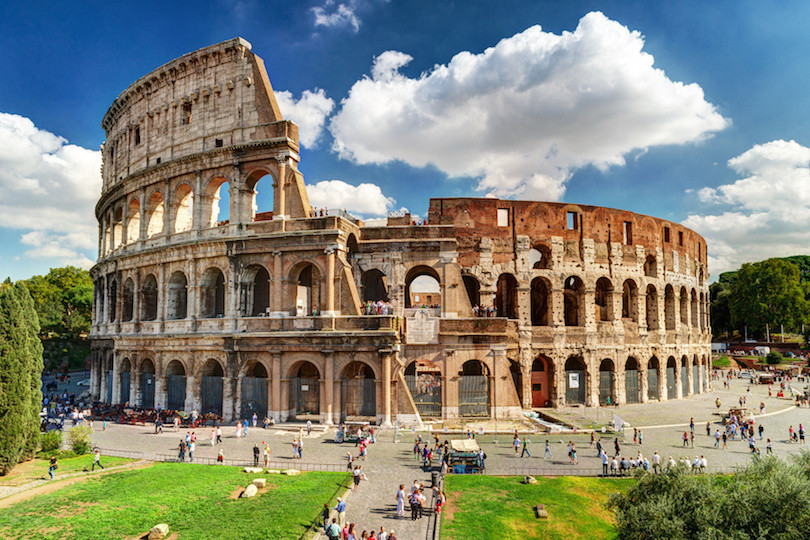
The Colosseum is one of the greatest structures of the Roman empire and is still “standing” nearly 2000 years after it was completed.
Inside the arena there are networks of underground tunnels and rooms. Over the centuries, countless tournaments, hunts and even mock sea battles have taken place in this arena that can hold up to 80,000 spectators.
The Colosseum is a must-see attraction due to its awe-inspiring architecture, breathtaking size, and historical importance.




